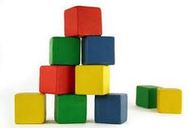|
We know that the definition is either at the beginning or the end of the word, which means that the answer means either "slowly" or "a father". It could be "an Italian day slowly" but that doesn't make much sense. It could also be "A father faces" but that doesn't make much sense either.
I’ll give it to you straight away: the definition portion of this clue (which I have underlined) is “slowly”. Now: to solve the riddle portion of the clue (i.e., “A father faces the first part of an Italian day”), you need to break it down into building blocks: An Italian day is a “giorno”.
A synonym for father is "da".
"A" stays the same.
So now we have "a da" at the front, and "giorno" at the end. Are you starting to get any ideas? "A" and "da" are said to “face” the rest of the clue because they go next to it.
And "the first part" of "giorno" is just "gio". Put it all together and you get: a + da + gio = ADAGIO, which means a slow tempo. That seems a bit complicated...
You're right, it's a bit tricky. But just like parallel parking or shopping at Ikea, it gets easier with practice. Of all the different kinds of riddles, composed clues are the ones that have the most tricks. See the scrolling "cryptic crossword hints" at the top of this page for some examples.
It's All About How You Slice It
The trickiest part of a composed clue (other than figuring out which part is the definition and which part is the riddle) is figuring out where the divisions are. For example, how are you supposed to know that it’s “the first part of an Italian day” and not “the first part of a” followed by “Italian day”? You get a feel for it over time. Try different combinations and think laterally in order to get to the correct answer.
Want More Practice with Composed Clues?
|
HINT: When you’re starting out, you might want to leave the composed clues for last and focus your attention instead on all the other types of clues, which are easier. Then, you might find that when you have some of the letters filled in, the definition part of the clue stands out to you and you are able to guess what it might be. Once you have that correct answer, try to reverse engineer it, ultimately figuring out the composed clue by starting with the answer. |






